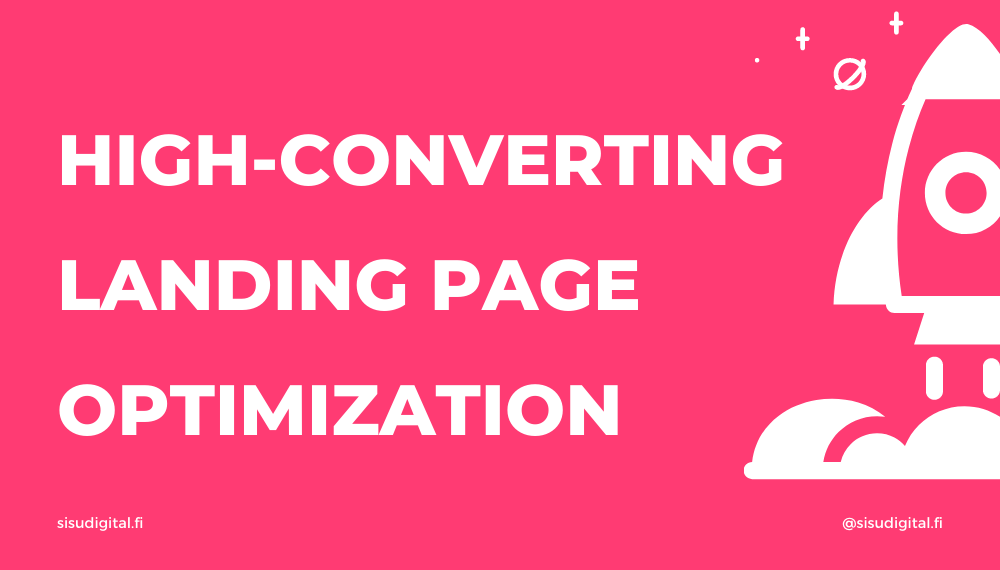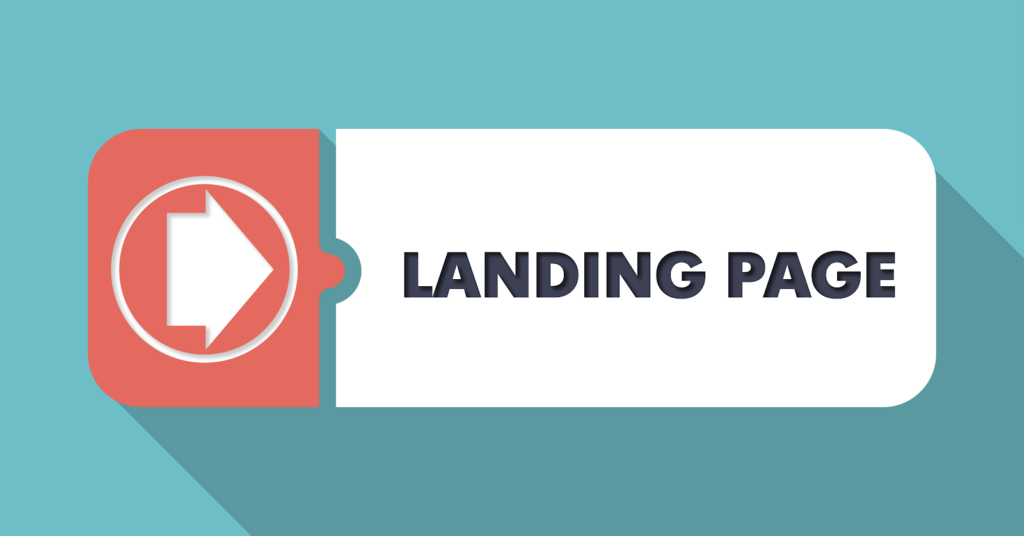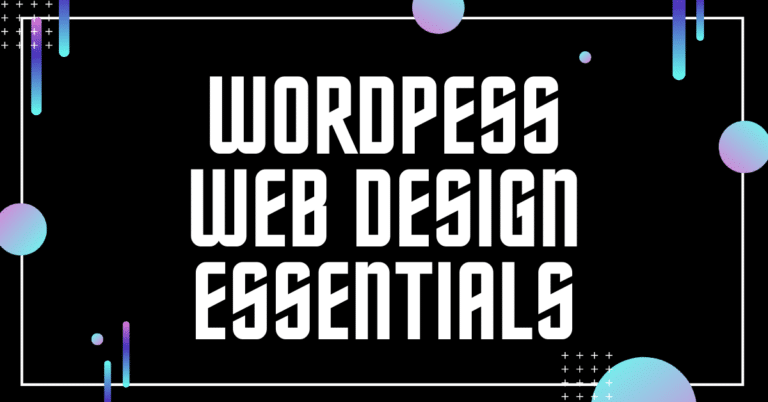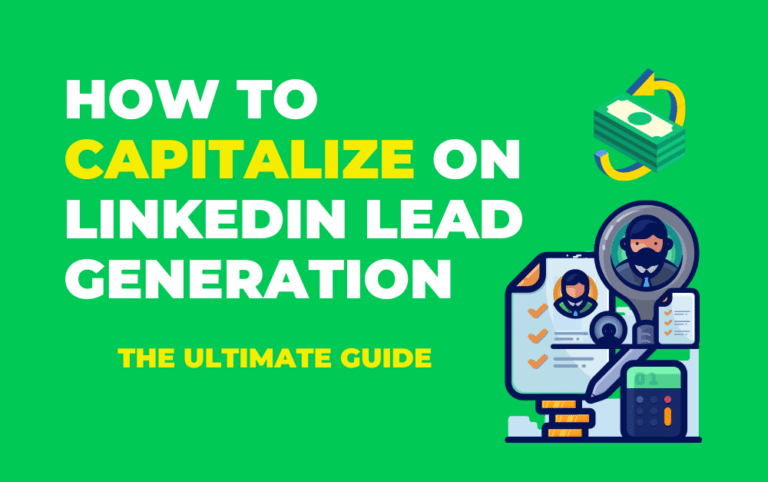In the ever-changing realm of the virtual landscape, the landing page is one of the most important tools in digital marketing. It is known by various terms such as destination page, lead capture page, and or a static page.
What Are Landing Pages?
A landing page is a single page that opens up in response to a visitor clicking on a marketing email, search result, online advertisement, etc.
When the visitor arrives on this page, a directed sales copy will be displayed. This is usually an extension of the link, advert, or search result that the visitor clicked.
They are primarily used for lead generation purposes. The decisions (or actions) that the visitor makes on this landing page will affect the advertiser’s conversion rate. A landing page may appear within a company’s website, a single page, or as part of a microsite.
To enhance the performance of advertisements, landing pages are linked to email campaigns, affiliate accounts, search engine marketing, and social media campaigns.
Landing page optimization is done to convert visitors into potential leads and sales. If a company’s goal is to get leads, the landing page will feature a way for visitors to get in touch. This usually through an inquiry form or telephone number.
If obtaining a sale is the goal, a landing page will display a link that prompts visitors to click on it. This link will direct them to a checkout area or shopping cart. Marketers analyze the activity created by this linked URL. Conversion and click-through rates are obtained to figure out the success of a particular advertisement.
Why Is A Landing Page Important?
Simply building a website and leaving it on won’t help you build a thriving business or grow a successful company. You have to make active efforts to reach out to your target audience and convert them into leads and paying customers. A landing page provides a targeted approach to accomplish this feat.
Landing pages drive traffic to your website, build your brand, and improve SEO. You can easily incorporate it into a successful PPC strategy.
According to a study conducted by Marketing Sherpa, more than 68% of B2B businesses have a high converting page to source leads for conversion.
Landing pages direct consumers to a specific offer, product, or service and encourage them to make a decision (take action). This provides you with opportunities to create conversions and grow your customer base.
A business without a landing page will suffer a blow in its marketing efforts, specifically related to digital marketing. If having a landing page is so vital, then why isn’t every company using them? There are still many misconceptions surrounding them, specifically, they’re difficult to create and manage.
Luckily, this is not true! To build a landing page that converts, focus less on flashiness and more on giving customers what they want.
Here’s how you can create a high converting landing page in 2021
Step 1: Study Your Audience
Improve conversion rates and increase the applicability of your landing page by staying mindful of your message and audience. Steer clear from using generic messaging. This only gives visitors the same experience that they probably got on other sites.
Stand out from the competition and create multiple landing pages for your specific audience. This will aid in conversion rate optimization.
For example, if you have a clothing business, create several pages with tailor-made content for customers who live in specific areas of the country.
Don’t forget to add a sense of urgency wherever necessary. Create a landing page that showcases winter clothing for potential customers who live in cooler areas, while a different landing page can promote swimwear for prospects living in warmer areas.
Step 2: Use An Attention-Grabbing Headline
A flashy headline is the first thing site visitors will notice when they arrive on your company landing page. This is what is going to spark their initial interest and perhaps even keep them on the page for a few seconds. It will also entice them into looking further because you’ve already sparked their curiosity. Your headline is going to signal that ‘our company has what you’re looking for.
Although a headline contains a few words, there’s still some science involved in it. So it’s very easy to mess it up.
Here are important elements that must be included to make an effective headline:
- It informs the visitors what this product is about.
- It is clear and straightforward.
- It is relevant. This means it delivers on what it promised in the ad. This promise is what motivated the visitor to click on the link. If your headline is not related to the ad or it doesn’t deliver on its promises, the visitor will be unhappy and leave the landing page.
- It shows empathy. What is your prospective visitor’s biggest concern? Convey that you understand!
Step 3: Write An Effective Body Copy
Writing good copy is the hardest thing to get right because it has to support the advantages you outlined in the headline. The body copy must achieve this feat as compellingly and convincingly as possible.
The main goal is to keep visitors on the landing page until they scroll down to the call to action. In other words, your body has to have content that converts.
If you want to write good landing page copy, you must be persuasive at marketing and writing. There are additional things to consider such as the word count.
If you use only a few words, then your visitors won’t have sufficient information to convince them about your product/service’s benefits. It might also make them NOT trust you!
Using too many words (excess verbiage) can take away from clarity and overwhelm them.
Even though there isn’t a set rule about how many words you should use, it’s necessary to use as many as required to convey your point. In case the service or product is too complex, ensure you list all the necessary details.
Omitting this list will make your prospect feel unsure. However, if you’re an affiliate marketer who is promoting an e-book in return for an email, you don’t need to use many words. But you still need to address the benefits.
Step 4: Get to Writing
1. Mention the pain points.
It is human nature to avoid pain and seek pleasure. We’re a hedonistic species. A simple copywriting strategy is to help visitors remember what they might lose if they don’t grab your offer.
Loss aversion is more powerful than thinking about what we will gain. If you can demonstrate what visitors stand to lose and what they will gain, then you’re close to winning. But don’t go overboard either. Convey the pain point, but quickly show how the product/service can provide relief.
2. Make the reader feel.
Enter the pleasure-seeking areas of the brain. You can make this entry through images. For instance, show pets using the product and having fun. You also make readers feel good with good copy.
How? Show what your product represents. For example, if your product or service will bring pain relief, or freedom from pests, etc. Be sure to use strong and moving words to make visitors feel good about your company and what you’re offering.
3. Use Pictures Correctly.
Your landing page will be ineffective without any images.
An image conveys emotions. It demonstrates what your service or product will look like. Some images even show how your product/service works.
Another key role that images play is to break up the text. Basically, they add a visual dimension to your landing page.
An eye-tracking study showed that human brains are capable of processing images 60,000 times quicker than text. This means that images instantly grab a visitor’s attention, especially if they are near the headline.
Imagine the impact you’ll make if you nail the headline and the main image! Pictures bring out and trigger emotions more effectively than words. You have to find the right balance between showing and telling.
Images are a key part of landing page optimization. When selecting an image, ensure it is:
- Large enough but not too big.
- High-quality and not blurry.
- Relevant to your business.
- Attention-grabbing.
Keeping all this in mind, your image might show a person using the service/product. If your product or service is a bit complicated, implement screenshots that demonstrate how to use it. This is a great idea for SaaS businesses. If you opt for this image, ensure they are eye-catching and fun.
Mundane screenshots will not work. When you put in some time and effort in selecting an appropriate image, your customers will understand what they will gain from your product or service. If the image is too complicated, the visitor won’t proceed further.
Step 5: Build Customer Trust With Reviews
How many times have you read customer reviews about a particular service or product before making a purchase decision? If you have, then you know the value of online reviews and the direct impact they can have on a business.
To put it plainly, customers care about what other customers think. A study conducted by BrightLocal found that 85% of customers trust online reviews just as much as personal recommendations.
If you receive positive feedback about your products/services, take advantage of this. Include testimonials from happy customers on your landing page. These testimonials will promote your business and its products/services. They will also help give a potential customer the final nudge before making a purchase decision.
Step 6: Include Discounts and Promo Codes
These are useful tools to drive sales. A survey conducted by Yodle found that 57% of customers stated that companies who offered special discounts for return consumers, stood out from the competitors.
When you’re building your landing page, consider the option of offers and coupon codes as an incentive for your clients. Create a specific landing page that targets a particular audience segment.
Step 7: Provide Customers Social Proof
What is social proof?
It refers to everything related to the number of shares, tweets, likes, subscribers, pins, etc., that your business receives. You should display these noticeably on your landing page.
Why? A recent Hubspot study found that 71% of millennials were more likely to buy something if the product/service was recommended online.
Social media recommendations from peers play a major role in buying decisions. It shows potential customers that your company has a fan base. This can help you convince them.
If your business is new and you haven’t gathered enough social clout yet, request current customers to submit testimonials.
Here’s how you can include them:
- Include testimonials from real customers. Experts and celebrities are great to have, but you don’t have to only get them from these sources. Select testimonials that matter to your target audience.
- Include pictures. Pictures add another level of trust to your testimonial. Ensure every testimonial is published with a photograph of the person.
- Testimonials must be specific. Avoid fluffy generalities. These don’t make good testimonials. In fact, they appear fake and doctored. The best testimonial is one that conveys experience and applications with a particular service/product.
Step 8: Keep It Simple
Many e-commerce sites make the grave mistake of packing in a lot of information onto their landing pages. It might help put multiple products in front of the customer’s face, but it’s also overwhelming and tiresome.
When designing your landing page, keep the design clean. Only keep the essential text with a relevant image or two. Ensure the images do not overpower the content. If your landing page design is simple, it will be easier for potential customers to navigate and probably convert.
Step 9: A/B Test Your Page
Once your landing page is designed and ready to go, publish it. Then start evaluating the metrics to figure out how it’s doing. Are you getting the conversion numbers you expected? If not, where are visitors getting lost?
You can gather information about your page’s performance from various sources such as:
- User recording sessions
- Scroll maps
- Heat maps
These numbers will let you see if additional work is needed for improvement.
After studying the figures, test different versions of your pages against one another. See which landing page has better metrics. A/B testing lets you refine your landing page over a period of time. It ensures you get the best performance from your digital traffic.
Step 10: Finish With A Bang-The Call To Action
An important hallmark of a high-converting landing page is a strong call to action or CTA. The CTA is usually placed at the end of the landing page copy. Its main objective is to let visitors know exactly what they’re supposed to do next. There should be no confusion. The language in your CTA must be clear and direct.
The CTA is sometimes called the money shot. It is very important that you do everything correctly about it. For instance, examine the location of the CTA. Most of them are placed at the end of the landing page because your body copy will be used to warm up prospective visitors.
If the CTA is revealed too fast, the visitor may not be ready to make a decision. When writing your CTA, it needs to be isolated from other elements on your blog. It needs to be obvious to visitors that it’s a CTA. Many digital marketers convert the CTA into a button. This appeals to the human instinct of wanting to click on a button when they see it.
What colors are appropriate for your CTA? It’s always a great idea to use contrasting colors for the background and CTA. For instance, white and black work exceptionally well. However these two shades can be mundane as well, so opt for colors that are visually popping. These will help your CTA stand out. A good place to start is your brand colors.
The CTA copy is another important aspect of landing page optimization. When you use first person language, it shows ownership. An example is “claim my free brochure now”. You may use direct language as well such as, “Sign Up For Free Today”. It conveys to the visitor that they don’t have to spend their money today. The word ‘free’ is one word that is great for boosting conversion rates.
Learn how to write better marketing copy and CTAs with our copywriting techniques: how to create powerful marketing copy
Skip all the steps and let us help
Without a doubt, the landing page plays an essential role in your conversions. So it’s very important that you get it right. It entails many aspects such as choosing an appropriate image, writing stellar content, to design elements.
In addition, you must create multiple landing pages to target different audiences that use your products/services. You will have to keep on top of testing and tweaking as you progress.
This will help improve your performance. Use the tips mentioned in this blog to build a landing page that delivers higher conversion rates.
Subscribe to Sisu Digital for more valuable tips on how to build effective landing pages.
Do you need a landing page for your upcoming product launches? Sisu Digital offers web design services for landing pages, one-page websites, and multiple-page websites.
Not seeing what’s right for your company? We also develop websites customized to your business needs.









